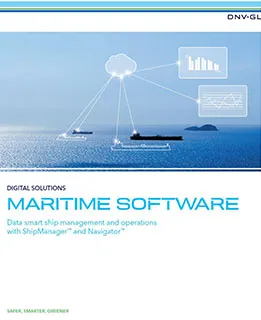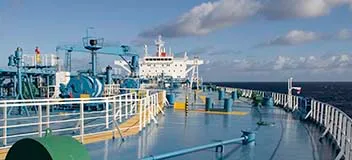These top five common mistakes during a fleet management system implementation could result in costly delays - or even cause the project to fail.
Ship management software implementation
Implementation projects of ship managemet software, whether maintenace planning, procurement or crew safety, usually involve migrating an enormous amount of technical and operational data. You need more than just a great marine fleet management software system. A vessel can have more than 15000 pieces of equipment to keep track of with 1500 planned and tracked maintenance jobs in a year. Your ultimate goal with a new system is to improve efficiency in a competitive market and have immediate access to centralized data and operational insight. But what are the obstacles? These five common mistakes could result in costly delays - or even cause the project to fail.
Mistake #1: Not involving stakeholders and end users from the start
An implementation of a new fleet management software system across your fleet, onboard and onshore, is just as much about managing human beings, as it is about managing software. It might seem simpler and more efficient to make decisions throughout the software selection and implementation process on behalf of the company, not involving all stakeholders. But this will only lead to complications later on. The results of not involving the users properly, onboard and onshore, can be a scope that does not fulfil the needs of your organization, causing costly rework and delays. This could also cause less commitment from your team, unused capabilities, and untapped benefits of your new system due to lack of data quality.
Mistake #2: Failure to protect and increase the value of your current data
You're the project manager for the implementation of new fleet software. The amount of data you're sitting on - and their spread-out locations in different systems - makes migration challenging. You have 20,000 data points. How do you integrate all this data on a common platform? Where do you start? Have you planned for collection of previous data for comparison purposes, for example to show improvement trends (such as incident reporting) from previous years? How will you reap the many benefits of aligning, streamlining, analysing and using your valuable data? It's easy to overlook the importance of expertise in data collection and the consequences of lacking data quality. Time to obtain such data and format it to the correct specifications is time-consuming and not a task that should be planned between assignments at sea. Incomplete or uncleansed data, along with subpar data management have in some cases caused a project to stop completely, at an excessive cost to the owner.
Mistake #3: Non-centralized data management
Cost-conscious ship owners today are realizing the disadvantages of ship-specific databases. Without centralized data management you will have duplicated, inconsistent and incomplete data, costs from data entry rework, and you will not fully achieve the large potential efficiency gains through cross-fleet analytics. If you don't have experienced implementation resources on the team you may end up with a system that doesn't take advantage of a centralized solution where information about the same components, spare parts and maintenance data is shared across the fleet. This will represent extra costs in the long run.
Mistake #4: Not having a change management strategy
Having a change management strategy and influencing expectations is a major part of the project. If you underestimate this, the consequences can add up, when the real cost savings of the system should be kicking in. New systems will always call for people to change some aspect of their daily work, large or small. If users are resistant to change they will not use the system as intended. An example is when traditional Word or Excel-based reporting remains while they should be replaced with consistent reporting in the new system. This can lead to inaccuracies in operational insight and affect everything from maintenance routines to safety and compliance.
Mistake #5: Missing the contract details
You may have a specification in an RFQ, but after choosing the lowest cost supplier, only critical tasks are covered. Or your specification may not be clear, making it hard to defend unexpected deliverables. Know exactly what's in the contract with your software supplier - and make sure that everything you want is fully covered for your stakeholders. If areas are not covered, they will not be included in the delivery, which ultimately means that you wait longer for these functions to be up and running, when a new agreement is reached with the vendor. This could impact usability, cause a need for rework or ultimately stall the entire implementation project. If you don't have flexibility in the form of a contingency slush fund to support change control at critical points in your schedule, unknowns can disrupt and cause way-lay, or users may not use the system to its full extent. This can affect the functionality of the system.


